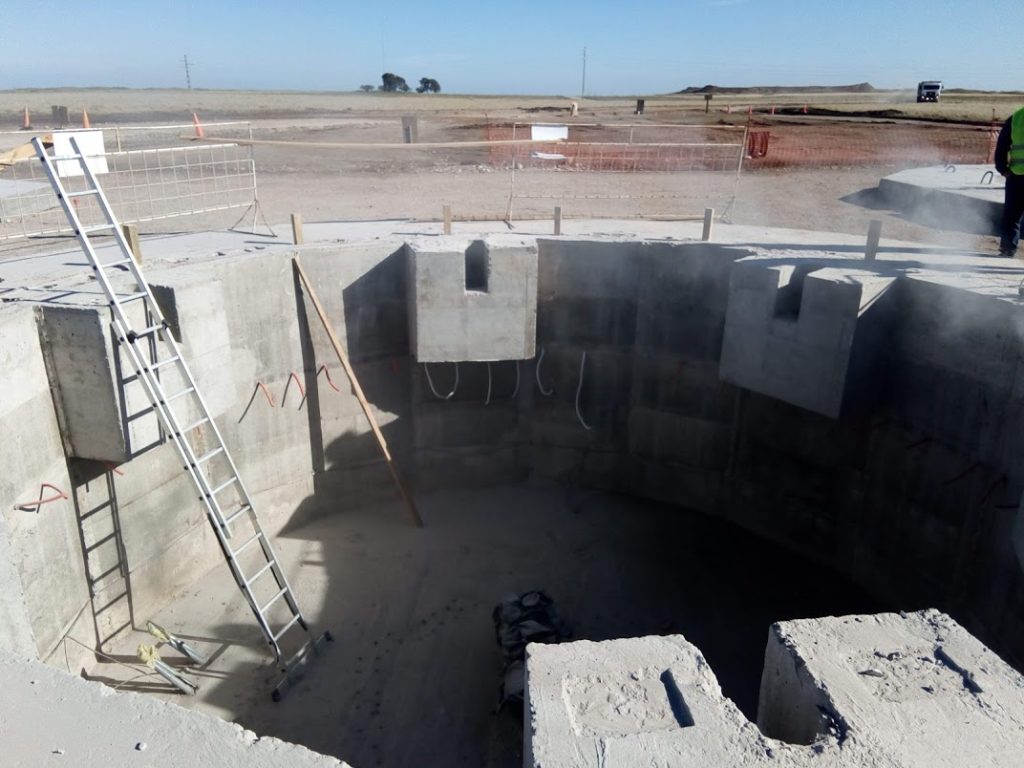Concrete Tower Foundations with Pre-Stressed or Post-Tensioned Cables

The most common foundation scenario for concrete towers features a cellar. Since 2010, CTE Wind has provided foundation solutions for concrete towers in different variants. One such foundation solution is the hollow foundation solution.
One critical factor to be considered in a wind farm project is the type of wind turbine tower. There are primarily two categories of wind turbine towers available in the market: tubular steel and concrete. The mix of both types is a hybrid tower. Independent from the selected tower system, the increased prevalence of higher hub heights leads to larger tower bases which challenges the tower manufacturers to develop new solutions or systems.
In addition to the various pros and cons of tubular steel versus concrete to be considered, the choice of the tower has an impact on the foundation. A steel tower nowadays almost always comes with an anchor cage. On the other hand, concrete towers need a tensioning system usually using cables anchored in the foundation. CTE Wind Civil Engineering has provided solutions for concrete towers in different variants for the last 11 years and counting.
Let us take a closer look at the different parts of the foundation:
Foundation design of the outer shape
Like the toes and the ball of your feet, the outer shape prevents the wind turbine from tipping over. The foundation for concrete towers can be designed as standard gravity or deep foundation with piles. To save resources, CTE Winds Soft-Spot™ solution (patent pending) or a ribbed (star) foundation could also be applied. Moreover, working with different tower manufacturers requires consideration for further variable construction criteria. CTE Wind is specialized in its knowledge and experience in factoring in said variables, such as the pre-stressed or post-tensioned cable system.
The foundation from inside
The most common foundation scenario from the inside point of view features a cellar where cables are anchored and cable tensioning tools are placed. This kind of solution is often referred to as a “Hollow Foundation Solution” as shown in the picture. This design has a cellar to allow for access into the foundation and to tension the anchor cables of the tower. The reinforcement design for the hollow foundation solution is also substantially different from that of standard gravity foundations. Besides the customized interior formwork, special attention has to be paid to the design of the anchoring bulkheads where concentrated loads are applied to the concrete in very limited spaces.
Another option to anchor the tower to the foundation is to install protruding bolts out of the pedestal and into the tower where the cables can be connected. In this solution, the cellar is not necessary. The bolts are easy to access for tensioning. Lastly, and more seldomly used, is the combination of the concrete tower and foundation into a monolithic structure where only classic reinforcements are used but no tensioning elements are needed. This type of solution can unfortunately lead to concrete cracks at the bottom tower section.
If you want to learn more about CTE Wind International and CTE Winds CONCRETE TOWER SOLUTIONS please visite OUR-PROJECTS & OUR-NEWS – sections. For more Information about OUR-SERVICES please CONTACT US.





















